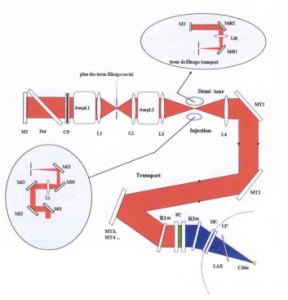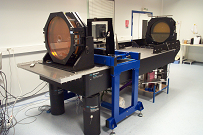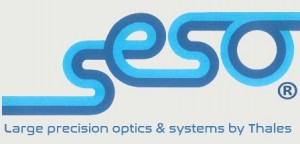Laser Mega Joule
The high number of laser beams and the high power that will be implemented in the LMJ require optical components (windows, lenses, etc) of exceptional quality, particularly in terms of polishing. Working closely with the CEA, Thales met the challenge by defining new processes and installing a dedicated production line.
Background information
The Laser MegaJoule (LMJ ) is a key element of the CEA simulation program. The purpose is to simulate the different a working phases of a nuclear weapon to guaranty its performances without nuclear tests.
The LMJ is the highest energy laser in the world. It will be installed at the Center for Scientific Studies and Techniques d’Aquitaine (CESTA) in Barp near Bordeaux. The entry in service is scheduled for 2014. A prototype of the LMJ is functional since 2003.
Each laser beam is composed of many optical components (mirrors, lenses, windows,…) to amplify and transport and focus the light to a tiny bead of 2mm
The megajoule laser was designed to validate simulations of nuclear tests. However, it will benefit many other areas including plasma physics, atomic physics, laser interaction with matter and the treatment of cancer.
Thales responsability
 Thales is responsible to produce 7 components on each of the 196 beams. Their dimension is around 400x400mm.
Thales is responsible to produce 7 components on each of the 196 beams. Their dimension is around 400x400mm.
The slope error on these optics can be as low as 0.7µrad with a roughness less than 2Ȧ
We developed innovative processes to get rid of the subsurface damages generated by the polishing as well as a fully automated interferometry bench to ensure the specifications are met.



